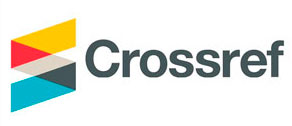The Effect Of Size Company, Profitability, Financial Leverage and Dividend Payout Ratio on Income Smoothing in The Manufacturing Companies Listed in Indonesia Stock Exchange Period 2010-2013
Abstract
This study aims to identify and analyze the effect of firm size, profitability, financial leverage,
and dividend payout ratio on income smoothing in the manufacturing companies listed in Indonesia Stock Exchange period 2010-2013. The first hypothesis is firm size has positive effect on income smoothing, the second hypothesis is profitability has positive effect on income smoothing, the third hypothesis is financial leverage has positive effect on income smoothing, and the fourth hypothesis is dividend payout ratio has positive effect on income smoothing. Measurement of income smoothing is based on the Eckel Index. The sample in this study is manufacturing companies that listed in Indonesia Stock Exchange period 2010-
2013. Sampling using purposive sampling in order to obtain a total sample of 27 manufacturing companies that meet the criteria of the study sample set. Company size is measured by total assets, profitability measured by Net Profit Margin (NPM), financial leverage measured by Debt to Equity Ratio (DER), and Dividend Payout Ratio. The technique of data analysis done with the binary logistic regression analysis using SPSS 18.0 for windows. The results showed that in firm size, profitability, and financial leverage has positive effect on income smoothing in the manufacturing companies are listed in the Indonesia Stock Exchange, while the variable dividend payout ratio does not have effect on income smoothing in the manufacturing companies are listed in the Indonesia Stock Exchange.
Keywords
Full Text:
PDFReferences
Baridwan, Zaki., 2000. Intermedite Accounting, BPFE, Yogyakarta.
Budiasih, Igan. 2009. Faktor-Faktor yang Mempengaruhi Praktik Perataan Laba. Jurnal Akuntansi dan Bisnis, 4 (1).
Djakman, C. D. 2003. Manajemen Laba dan Pengaruh Kebijakan Multi Papan Bursa Efek Jakarta. Makalah Simposium Nasional Akuntansi VI. Surabaya, 16–17 Oktober 2003:141–162.
Eckel, N., “The Income Smoothing Hypothesis Revisited”, Juni, 1981.
Etty M. Nasser dan Tobia Parulina 2006, “ Pengaruh faktor-faktor internal perusahaan terhadap income smoothing” Media Riset Akuntansi & Informasi; Volume 6, No. 1, April 2006.
Fudenberg, Drew and Jean Tirole. 1995. “A Theory of Income and Dividend Smoothing
Based on Incumbency Rents”, The Journal of Political Economy, Vol.103, No.1, p.75-93. Ghozali, I. dan A. Chariri. 2006. Teori Akuntansi. Semarang: UNDIP.
Ghozali, Imam, 2005. Aplikasi Analisis Multivariate dengan Program SPSS, Edisi Ketiga, Badan Penerbit Universitas Diponegoro, Semarang.
Ghozali, Imam. 2012. Aplikasi Analisis Multivariat dengan Program SPSS. Semarang: Badan Penerbit Universitas Diponegoro.
Hepworth, S.R. 1953. Smoothing Periodic Income. The Accounting Review.
Husnan, Suad. 2004. Dasar-Dasar Teori Portofolio dan Analisis Sekuritas, Edisi Ketiga, Yogyakarta: (UPP) AMP YKPN.
JURNAL Akuntansi & Keuangan Volume 6, Nomor 2, September 2015
Juniarti dan Corolina. 2005. Analisa Faktor-Faktor yang Berpengaruh Terhadap Perataan Laba (Income Smoothing) pada Perusahaan Go Publik. Jurnal Akuntansi dan Keuangan Vol. 7 No. 2.
Kasmir. 2011. Analisis Laporan Keuangan. Jakarta: PT Raja Grafindo Persada.
Kustono, Alwan Sri (2009), Pengaruh Ukuran, Dividen Payout Ratio, Risiko Spesifik, dan Pertumbuhan Perusahaan terhadap praktik, Perataan Perataan Laba pada Perusahaan Manufaktur Studi Empiris Bursa Efek Jakarta 2002-2006. Jurnal Ekonomi Bisnis, Volume 14 No. 3, November, Hal: 200-205
Moses, O.D. 1987. “Income Smoothing and Incentives: Empirical Tests Using Accounting Changes”, The Accounting Review, Vol. 62. No.2, p. 358-377.
Nasir, Arifin dan Anna Suzanti. 2002. “Analisis Pengaruh Perataan Laba Terhadap Risiko Pasar Saham dan Return Saham Perusahaan-perusahaan Publik di Bursa Efek Jakarta”. KOMPAK. Mei.
Prabayanti, Nik Luh Putu Arik dan Gerianta Wirawan Yasa. 2009.“Perataan Laba Dan Analisis Faktor- Faktor Yang Mempengaruhinya Studi Pada Perusahaan Manufaktur Yang Terdaftar Di BEI 2004-2008”. Skripsi. Universitas Udayana.
Sartono, Agus. 2001. Manajemen Keuangan, Teori dan Aplikasi. Edisi Keempat. Yogyakarta: BPFE.
Sartono, Agus. 2004, Manajemen Keuangan, Teori dan Aplikasinya, Edisi Kedua, BPFE UGM, Yogyakarta.
Sawir. 2004. Management Keuangan, Andi Offset: Yogyakarta
Sawir, Agnes. 2005. Analisis Kinerja Keuangan dan Perencanaan Keuangan Perusahaan. PT Gramedia Pustaka, Jakarta.
Schroeder, R. G. & Clark, M.W. 1998. Accounting Theory: Text and Reading. Sixth Edition. New York: John Wiley & Sons.
Scott, W.R. 2000. Financial Accounting Theory. 3rd Edition. Prentice Hall.
Subhekti, Y. 2008. “Faktor-faktor yang Mempengaruhi Perataan Laba (Income Smoothing) dan Bukan Perataan Laba (Non-Income Smoothing) (Studi pada Perusahaan yang Terdaftar di Bursa Efek Indonesia Tahun 2002-2006)”.Skripsi. Universitas Sebelas Maret.
www.digilib.uns.ac.id.
Sutrisno. 2003. Manajemen Keuangan. Edisi Pertama. Ekonisia. Yogyakarta.
Suwito, Edy dan Arleen Herawaty, 2005. “Analisis Pengaruh Karakteristik Perusahaan Terhadap Tindakan Perataan Laba Yang Dilakukan oleh Perusahaan Yang Terdaftar di Bursa Efek Jakarta”, Simposium Nasional Akuntansi VIII Solo, 15 – 16 September.
Yulia, Mona. 2013. Pengaruh Ukuran Perusahaan, Profitabilitas, Financial Leverage, dan Nilai Saham Terhadap Perataan Laba (Income Smoothing) pada Perusahaan Manufaktur, Keuangan dan Pertambangan yang Terdaftar di Bursa Efek Indonesia (BEI). Fakultas Ekonomi Universitas Negeri Padang.
------www.google.com
------www.idx.co.id
Fiscal ,Yunus & Steviany ,Agatha.2015.The Effect Of Size Company, Profitability, Financial Leverage and Dividend Payout Ratio on Income Smoothing in The Manufacturing Companies Listed in Indonesia Stock Exchange Period 2010-2013.Universitas Bandar Lampung.
DOI: http://dx.doi.org/10.36448/jak.v6i2.573











